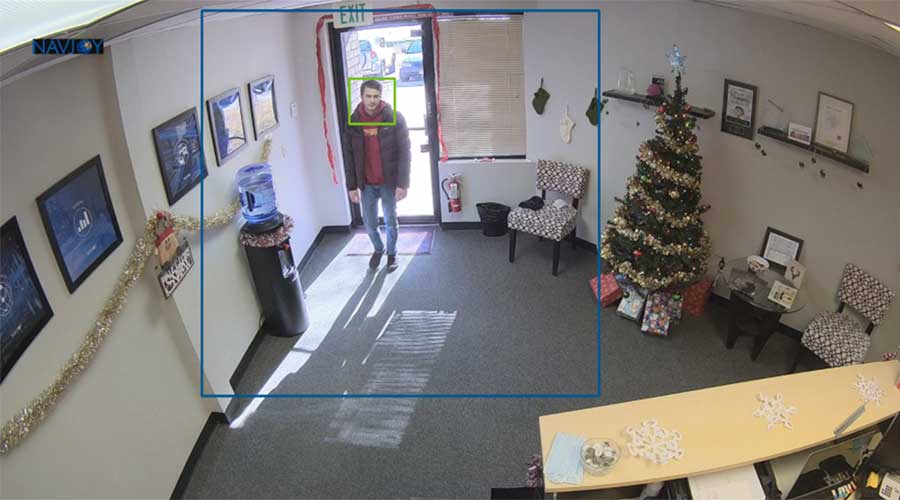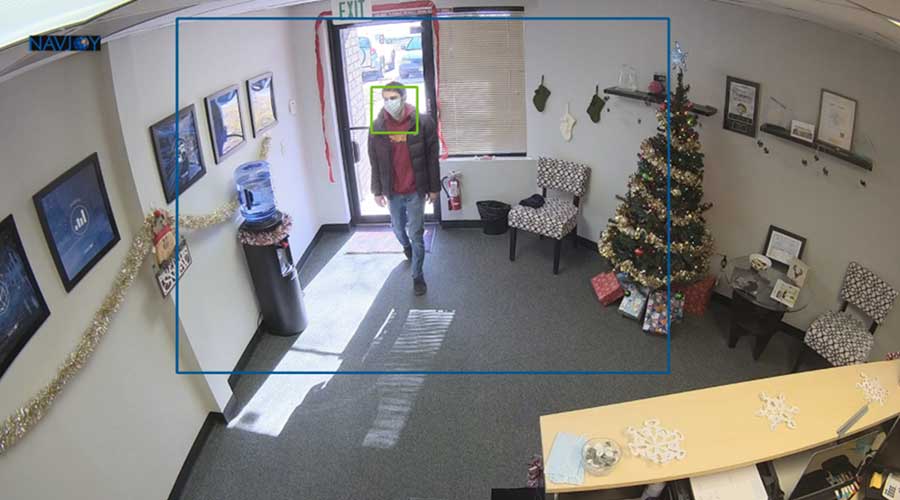By Justin Healey, Regional Business Development Manager
Many state and local governments have mask requirements, yet mask compliance is difficult to track. To help solve this problem, Navjoy’s R&D group explored ways we can use readily available technologies to study mask compliance. Using a Bosch camera installed in the office and its machine learning capabilities, Navjoy used the camera trainer tool to recognize a masked vs unmasked face.
Functionality
The camera is trained to count people (masked or unmasked), and count masks (masked individuals). From here we can calculate the percent of people wearing a mask when entering the building. The camera was trained to recognize a mask by its shape from a number of different facial profiles. For this initial proof of concept, we focused on recognizing the standard blue medical mask. Next steps would be fine-tuning the mask recognition using different mask color and skin contrast combinations. Additionally, the camera can alert the user when it detects an unmasked individual.
Future Goals
As we further refine the recognition accuracy, we aspire for the camera metadata to be used to create a dashboard of mask compliance. For example, if 100 people entered the building and only 30 unmasked individuals were detected, that would indicate a 70% mask compliance rate.
Applicability
Although we are in the middle of a pandemic and mask compliance detection is valuable, this detection capability is not limited to masks. This proof of concept establishes a more thorough understanding of how machine learning with images works, and how to more efficiently cameras in the future for other use cases. For example, traffic engineers could use this functionality to detect wheelchairs at a crosswalk and create a way for this alert to slow the walk to allow the handicapped individual time to cross safely. Another example would be uniform or box detection, which an organization could use to track deliveries to their facility.
In fact, we are already helping transportation agencies utilize this technology for traffic monitoring purposes. From wrong way detection to stalled vehicle detection, the applicability of this camera is extensive in the transportation sphere. Machine learning allows the end user to train the camera to recognize objects with a higher degree of accuracy than what is available out-of-the-box.
This intelligent training procedure is meant to be replicated and utilized on a bigger scale. It can provide several types of alerts, allowing organizations to track various factors that are important to them.


